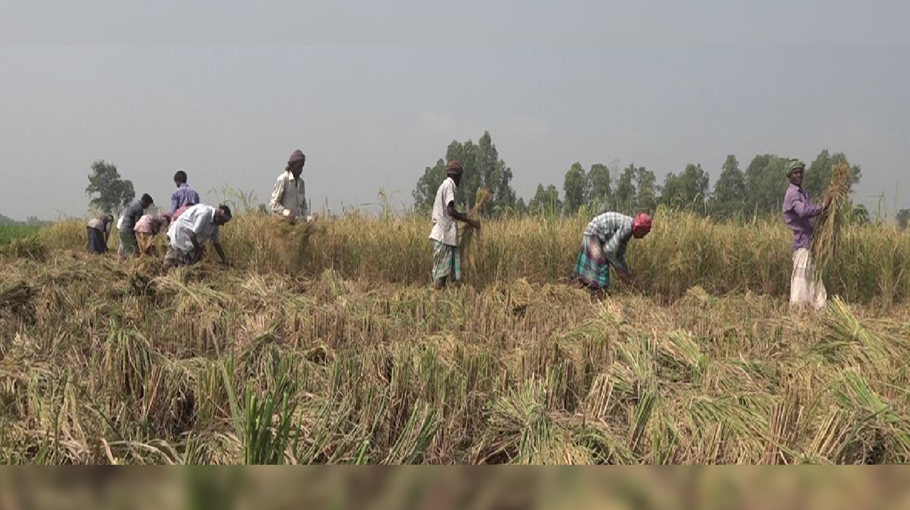Early paddy varieties prevents ‘famine of Kartik’ in Chalan Beel area



‘Famine of Kartik’ is a well-known phrase to the people of Chalan Beel area. Millions of people of this area have been fighting with the famine of Kartik for ages. However, that picture has changed completely today.
The short-term early rice varieties have brought a message of happiness to their home. New paddy is produced in this district around the year now. That is why they do not have to wait for the festival of Nabranna.
The Chalan Beel is a huge water body in the northern part of Bangladesh that is spread over about nine upazilas of Pabna, Natore and Sirajganj districts. Forty-seven rivers and other waterways flow through Chalan Beel. The sediment in the beel is accumulating, its size is shrinking.
According to other sources, including the Water Development Board, the beel had six months of water a year even in the eighties of the last century. The people living near the banks of the Beel depended on one crop. Sometimes, they used to spend the day without eating.
However, as a result of climate change, occupation of rivers, canals, unplanned roads and construction of infrastructure, the picture of Chalan Beel has completely changed today. Monsoon is short lived there. As a result, most of the beel has come under three crop farming due to lack of water.
Read More: Govt fixes procurement prices for paddy, wheat
Md. Abul Hossain, a farmer from Talam village in Tarash upazila of Sirajganj, recalled the past and said that the famine of Kartik was a symbolic terror even in the eighties. People used to die of diarrhea and cholera due to lack of food during that time. People were suffering from debt.
Sabur Hossain, a farmer from Gulta village, said the same. “People of this generation will not understand what hunger is,” he said. There is no accounting for the number of people who have suffered prematurely and died prematurely to fight hunger and poverty.
The golden crop of autumn can be seen in the fields of Tarash and Singra upazilas. Farmers are bringing home a few local short-term varieties, including high-yielding varieties invented by Brie, at the beginning of Kartik. Today, Kartik's famine has vanished from their houses.
At one time, the low-yielding Aman used to come to the farmer's house during the fragrant month. In the midst of hundreds of shortages, the houses of the farmers used to be flooded during the Nabanna festival. Although it is no longer the festival of Nabanna, the advance paddy has saved them from the famine of Kartik.
According to the Department of Agricultural Extension, the life span of early-seeded BINA dhan-7, BINA dhan-17, BRRI-dhan-49, BRRI dhan-71, BRRI dhan-75 and BRRI dhan-34, Kantari and local variety Abdulguti is short-lived and they are high yielding. Kartik's famine has left the farmer's house.
All these high yielding paddy varieties can be harvested in 115 to 120 and 130 to 140 days with an average yield of Tk 18 to 20 mounds.
Although the land did not yield much in the previous days, now they are able to produce paddy at the rate of 15/20 mounds per Bigha.
However, the cost of production has gone up a lot due to insect infestation, increase in the price of fertilizer seeds and agro-mechanics. Even so, owning one is still beyond the reach of the average person.
Lutfun Nahar Luna, agriculture officer of Tarash upazila in Sirajganj, said the yield was as expected this year as the floods were short-lived and the weather was favorable.
In the past, people used to spend their days in this area during Kartik's absence. Now that the high yielding paddy of Agamjat has been planted, Kartik's famine has taken its toll.



